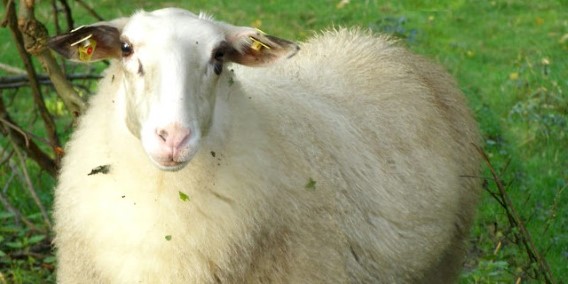Bentheimer Landschaf (A.K.A The Landrace of Bentheim) are
medium-sized German sheep. They were developed by a cross between German and
Dutch heath sheep and marsh sheep. They have been bred in the northern German
Emsland area since 1934, especially in the county of Bentheim.
They are mainly white and have black around their ears,
eyes, and legs. They have a slender body, long head and Roman nose. Their ears
are small and the tail is long and woolly. Both rams and ewes are generally
polled. The average body height of the mature ewes is around 67 cm at the
withers, and the rams are slightly larger than the ewes. The average live body
weight of the mature Bentheimer Landschaf rams is around 75 to 80 kg. And
average live body weight of the mature ewes is between 50 and 60 kg.
The Bentheimer Landschaf sheep breed is raised mainly for vegetation
management or landscape preservation.
Their average fleece production is around 3-4 kg. Their
fleece is of pretty good quality with a fiber diameter of 34-40 microns.
Bentheimer Landschaf ewes lamb easily, and
are very good mothers. They need to live in a flock, but they are easily
satisfied.
Today the Bentheimer Landschaf sheep is highly
endangered, and the breed is raised for landscape preservation.

